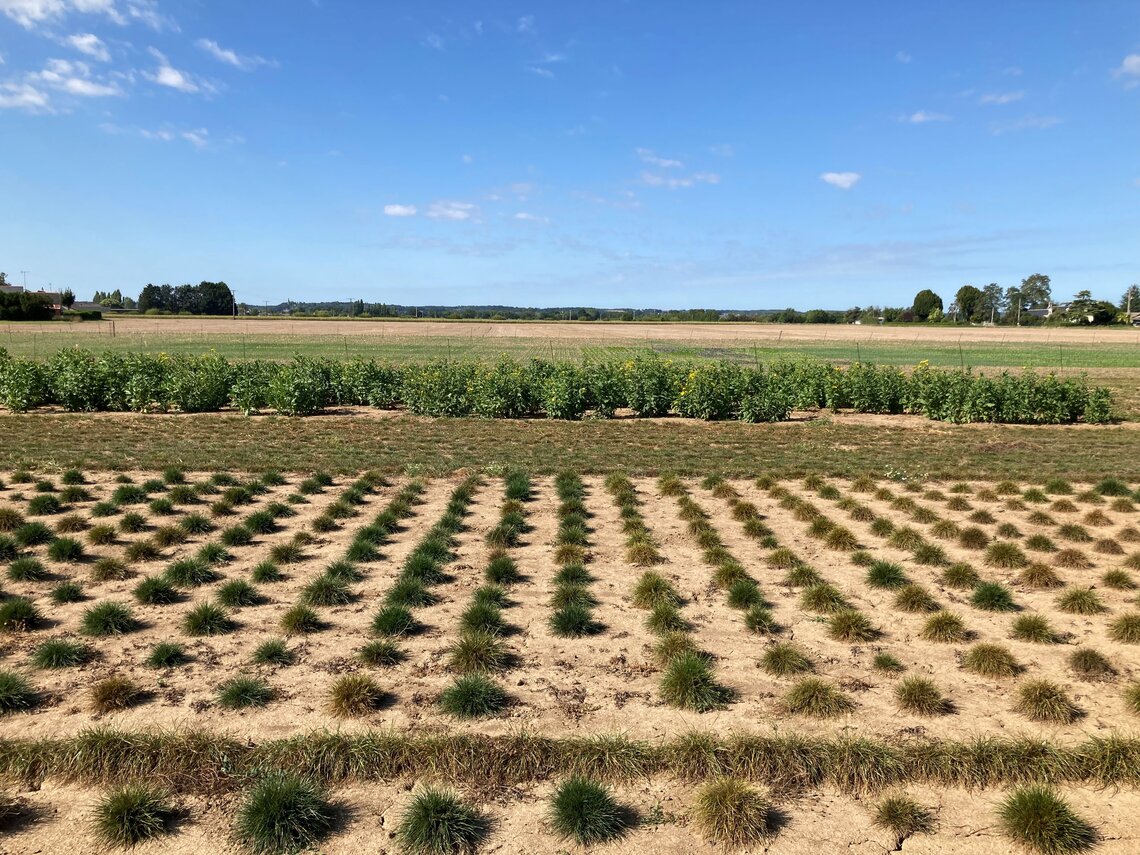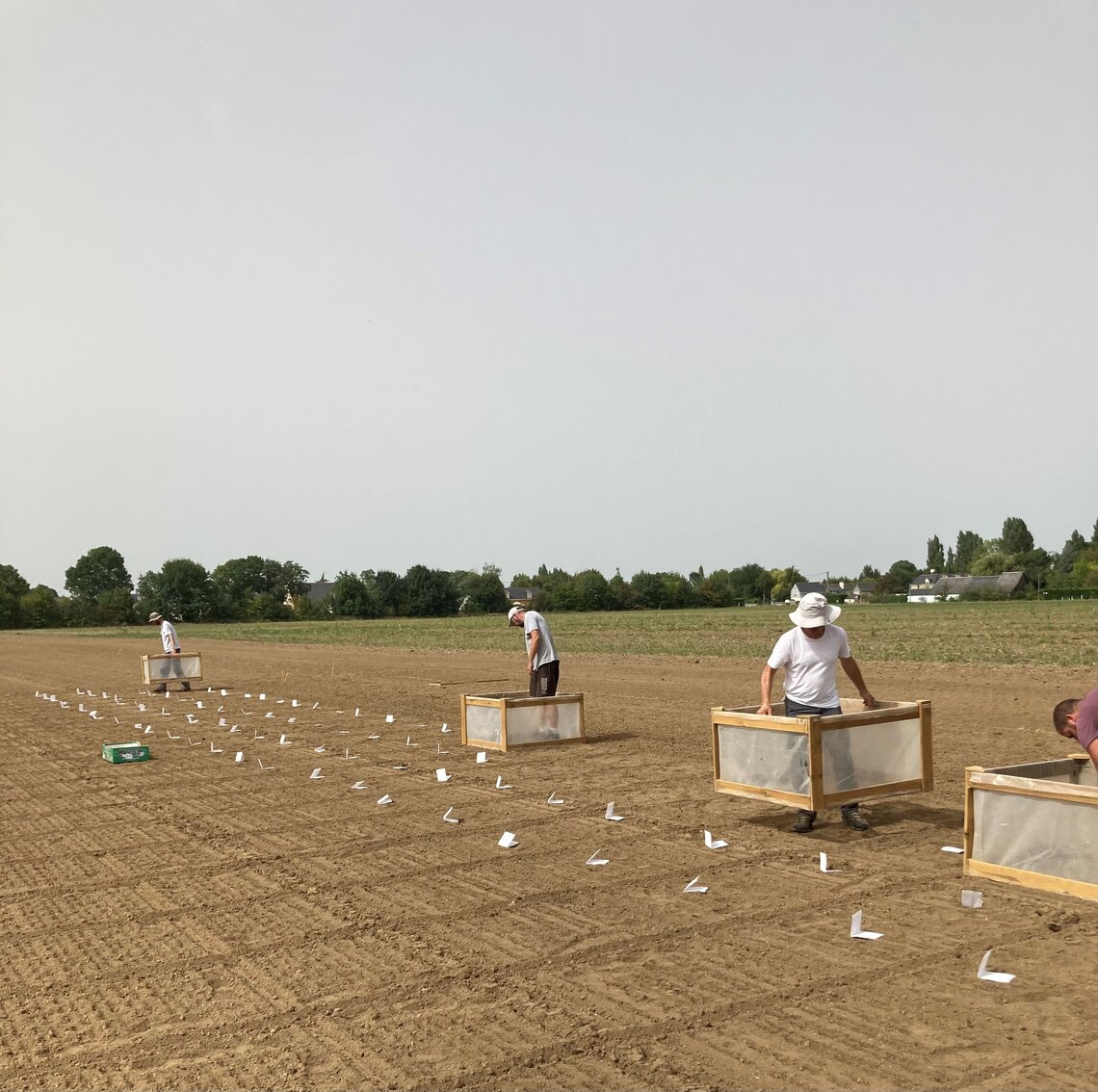
What did you do before, what is your academic background?
I started my study with a 3-year technical degree in sustainable farming for tropical area. I was located in two French departments overseas: French Guyana (Amazonia) and Réunion Island (Indian Ocean). Curious to understand how plants work, I decided to continue my studies with a bachelor degree in plant sciences, for which I moved to Rennes’s University in Britany. During these years, I did academic research on breeding winter oilseed rape and I was supervised by many inspiring professors. I realise that I wanted to continue as a plant breeder and I finished my studies with a Master’s degree in plant genetic, genomic and breeding at Agrocampus Ouest, an agricultural engineering school of Britany. After graduating, my first professional experience was to be a Rose breeder at Pépinière et Roseraies Georges Delbard.
I was responsible for two breeding programmes: Garden roses, the kind of plant for outside cultivating, and cut roses, the roses you find at your florist, which are greenhouse cultivated at the equator for 95% of global production. Two breeding programmes for the same species but very different. For cut roses, the targets are yield (number of stem per square meter), stem length, vase-life duration, petal hardiness, stable colour. This is a very technic product and it must not have any defects. For garden roses, plants are more emotionally selected. Targets are hardiness, disease resistance, original colour, different plant architecture like climbing or dwarf and strong perfume overall.
As a turf grass breeder, my job is to ensure good progress of the turf grass breeding scheme for France. In few words, my job to observe and analyse the turf performance throughout the year. My first task is to evaluate our turf grass breeding lines in trial by scoring. The characters we are interested in are seed yield, aesthetic aspect, fineness, density, wear tolerance, colour, greenness during summer, persistency, and of course disease resistance. My second main task is to create new turf grass varieties adapted to French climatic conditions. In the station of Les Rosiers, we are focusing on the breeding of three turf grass species: perennial ryegrass, tall fescue and strong creeping red fescue. As we are a small team in Les Rosiers, I am also participating in technical work like mowing, planting, sowing and I support my colleagues from the forage grass breeding when needed.
I chose the profession of plant breeder when I learned, that cultivated plants result from a long evolutionary history and have been shaped by humans for centuries. What an extraordinary story of domestication and improvement of cultivated plant species. Therefore, I chose plant breeding because I am fascinated by plants and their huge diversity. Another reason why I chose plant breeding is that this job combines science and creativity. I like to develop new ideas, to test them in the field, to analysis the results and to use this knowledge to develop new ideas again.
Spending a lot of time outside to observe and score is one of my favourite things in my job. Particularly, when it is possible to observe strong differentiations like during a big crown rust attack on perennial ryegrass. Turf grass is very interesting for lots of reasons. First, because we work with a perennial plant, means we can observe the species over several years and at any time. We thus see the performance and differences in every season of the year. Then, I have the chance to work on several turf grass species, not only one specie like other breeders. Each turf grass species has its own characteristics. Grasses also have a very impressive diversity: from very light to very dark colour, from very early to very late flowering. As a breeder, I have access to a large genetic diversity to create new varieties. A moment I appreciate a lot in my job is to have a walk in the single plant population. It is a good moment to have an overview of the different origins that constitute the population. It is very nice to have the possibility to look deep inside a variety and the different characteristics. Comparable, like opening a bonnet’s car and exploring the engine for every detail.
Like every breeder, selecting the best varieties for the future!
Turf grass breeding in France is very important because of the global warming. In a more or less near future, we will have to face increasingly violent climatic events and a disruption of precipitation and temperature. It will affect our lawn if our plant material would not be adapted. So we are heading for our research to drought tolerance and resiliency. The second important point is sustainability. We are now conscious that we need to avoid as much as possible mineral fertilizer and plant protection products, like herbicides or fungicides. We need to find new varieties that keep good performances and aesthetic in a low input management context. Furthermore, with the political will towards prohibiting or limiting the use of such products for individuals and professionals.
In order to improve our preciseness it is necessary to implement new technologies into our breeding program. Currently, many tools are available and technologies become cheaper. In other crops, some modern technologies are already being used for breeding. We now need to think of ways how we can use them for turf grass. When I talk about new technologies, I mean for instance high throughput molecular marker or phenotyping by drone.
Thanks Benoit for your time.

